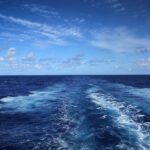Each year, lakes and rivers across the globe receive millions of visitors. They are home to a host of recreational activities that support and enhance our health and wellbeing—like boating, swimming, and hiking. Sadly, recreation can also negatively impact the waterbodies from which people receive so much enjoyment—from trampling plants to disrupting fish and other animals with noisy boat engines. To properly manage these recreational activities for sustaining both environmental health and human enjoyment, a new study lead by Dr. Markus Venohr and published in Environmental Reviews suggests we need to manage the social and environmental aspects of freshwater recreation in synergy.
When it comes to understanding the relationships between freshwater recreation and freshwater health, “there are many loose ends when you look at the literature,” explains Venohr, who works at the Leibniz-Institute of Freshwater Ecology and Inland Fisheries. Some of these loose ends relate to social aspects of recreation—such as which freshwater locations are used for different activities, when, how often, and how much. Others relate to the poorly-understood impacts different types of recreation have on freshwater environments. Exploring both of these aspects and interlinks between social perception and environmental assessment was the original vision Venohr and colleagues had for their paper. But there was a problem.
“I was looking for new data [and] I saw that other social or political, but [fewer] environmental studies, use Twitter and other social media to do some scientific analysis,” Venohr explained.
Originally the researchers planned to use geotagged social media data to identify which freshwater bodies in Germany were used for recreation and when. Those data, Venohr and his colleagues argue, could help assess recreational use and impacts on timescales that best represent when people are actually visiting the waterbodies. But it turned out that the authors had to get a better picture of the stress to aquatic ecosystems caused by recreational use before they could draw any conclusions on managing social aspects of recreation, according to Venohr.
Still, Venohr’s paper goes beyond synthesising what we know about how recreation impacts freshwater bodies and identifying what we still need to know. The authors created a two-part framework which can be used to understand the relationship between the social and environmental aspects of recreation. The first part focuses on the interplay between recreational use and the “quality” of the environment. The second part shows how management could be designed to respond to competing recreational and conservation needs. However, for a manager to make use of these conceptual frameworks, the social and environmental loose ends need to be quantified.
Venohr and colleagues are already filling in knowledge gaps identified in their framework. AQUATAG—a larger project to quantify freshwater recreational use in Germany as well as some of the environmental impacts that can arise from different types and levels of recreation—is currently in development. As for using social media, the researchers haven’t abandoned the idea. They are already working on a paper exploring how social media data have been used in various environmental studies, and how they can help to quantify where and when freshwater recreation activities take place.
Read the full paper — The underestimated dynamics and impacts of water-based recreational activities on freshwater ecosystems in Environmental Reviews.




